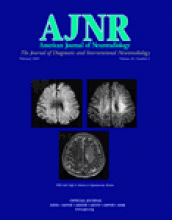Abstract
BACKGROUND AND PURPOSE: Cerebral hyperperfusion syndrome is a rare but serious complication of carotid endarterectomy (CEA). The aim of the present study was to determine whether intraoperative blood flow velocity (BFV) monitoring in the middle cerebral artery (MCA) by using transcranial Doppler ultrasonography (TCD) could be used as a reliable technique to detect cerebral hyperperfusion following CEA by comparing findings with those of brain single photon emission CT (SPECT).
METHODS: Intraoperative BFV monitoring was attempted in 67 patients undergoing CEA for treatment of ipsilateral internal carotid artery (ICA) stenosis (≥70%). Cerebral blood flow (CBF) was also assessed using SPECT, which was performed before and immediately after CEA.
RESULTS: Intraoperative BFV monitoring was achieved in 60 patients. Of the 60 patients, post-CEA hyperperfusion (CBF increase ≥100%, compared with preoperative values) was observed in six patients. The sensitivity, specificity, and positive predictive value of the BFV increases immediately after declamping of the ICA for detecting post-CEA hyperperfusion was 100%, 94% and 67%, respectively, with a cut-off point 2.0-fold that of preclamping BFV. The sensitivity and specificity of the BFV increases at the end of the procedure for detecting post-CEA hyperperfusion were 100% for both parameters, with cut-off points of 2.0- to 2.2-fold BFV of preclamping value. Hyperperfusion syndrome developed in two patients with post-CEA hyperperfusion, but intracerebral hemorrhage did not occur. In one of these two patients, BFV monitoring was not possible because of failure to obtain an adequate bone window.
CONCLUSION: Intraoperative MCA BFV monitoring by using TCD is a less reliable method to detect cerebral hyperperfusion following CEA than postoperative MCA BFV monitoring, provided adequate monitoring can be achieved.
- Copyright © American Society of Neuroradiology












